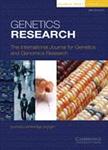版权所有:内蒙古大学图书馆 技术提供:维普资讯• 智图
内蒙古自治区呼和浩特市赛罕区大学西街235号 邮编: 010021

作者机构:Panyu Dist Cent Hosp Dept Infect Dis Guangzhou 510000 Guangdong Peoples R China Guangzhou Univ Chinese Med Clin Med Coll Acupuncture & Rehabil Guangzhou 510000 Guangdong Peoples R China Guangzhou Univ Chinese Med Dept Rehabil Clin Med Coll Acupuncture & Rehabil Guangzhou 510000 Guangdong Peoples R China
出 版 物:《GENETICS RESEARCH》 (Genet. Res.)
年 卷 期:2016年第98卷
页 面:e14-e14页
核心收录:
学科分类:0710[理学-生物学] 07[理学] 09[农学] 071007[理学-遗传学] 0901[农学-作物学] 090102[农学-作物遗传育种]
基 金:Guangdong Province Science and Technology Planning Project [20130319C] Guangzhou University of Chinese Medicine Pass-it-on Project [XH20140117]
主 题:Hepatocellular Cancer Hepatitis B virus Hepatitis B Human-centered computing Chronic liver disease and cirrhosis
摘 要:Background: Hepatocellular carcinoma (HCC) is a primary liver malignancy that mainly occurs in patients with chronic liver disease and cirrhosis. Risk factors for HCC include hepatitis B virus (HBV) infection. However, the specific role of HBV infection in HCC development is not yet completely understood. In order to reveal the effects of HBV on HCC, we compare the genes of HCC patients infected with HBV with those who are not infected. Methods: We encoded the genes of these two types of HCC in databases using enrichment scores of Gene Ontology and Kyoto Encyclopedia of Genes and Genomes pathway terms. A random forest algorithm was employed in order to distinguish these two types in the classifier, and a series of feature selection approaches was used in order to select their optimal features. Novel HBV-associated and -non-associated HCC genes were predicted, respectively, based on their optimal features in the classifier. A shortest-path algorithm was also employed in order to find all of the shortest-paths genes connecting the known related genes. Results: A total of 54 different features between HBV-associated and -non-associated HCC genes were identified. In total, 1236 and 881 novel related genes were predicted for HBV-associated and -non-associated HCC, respectively. By integrating the predicted genes and shortest path genes in their gene interaction network, we identified 679 common genes involved in the two types of HCC. Conclusion: We identified the significantly different genetic features between two types of HCC. We also predicted related genes for the two types based on their specific features. Finally, we determined the common genes and features that were involved in both of these two types of HCC.